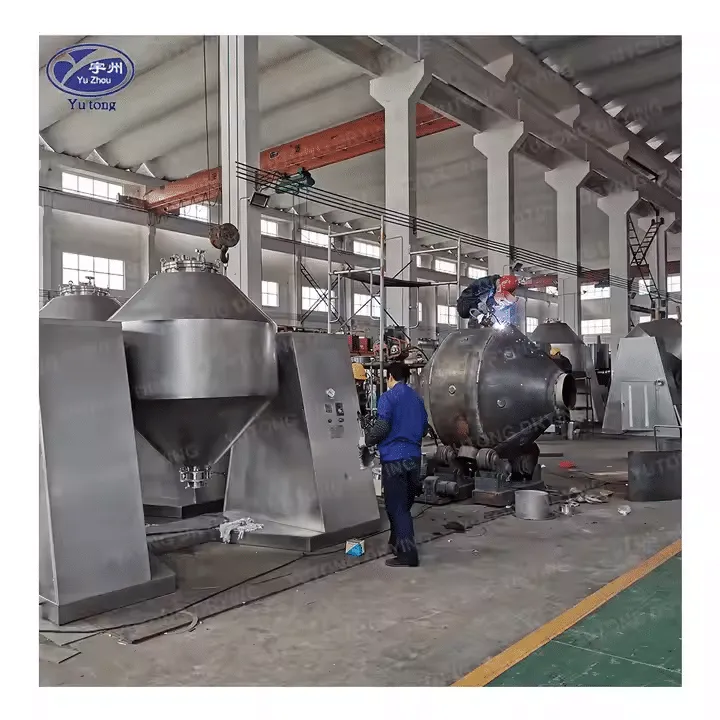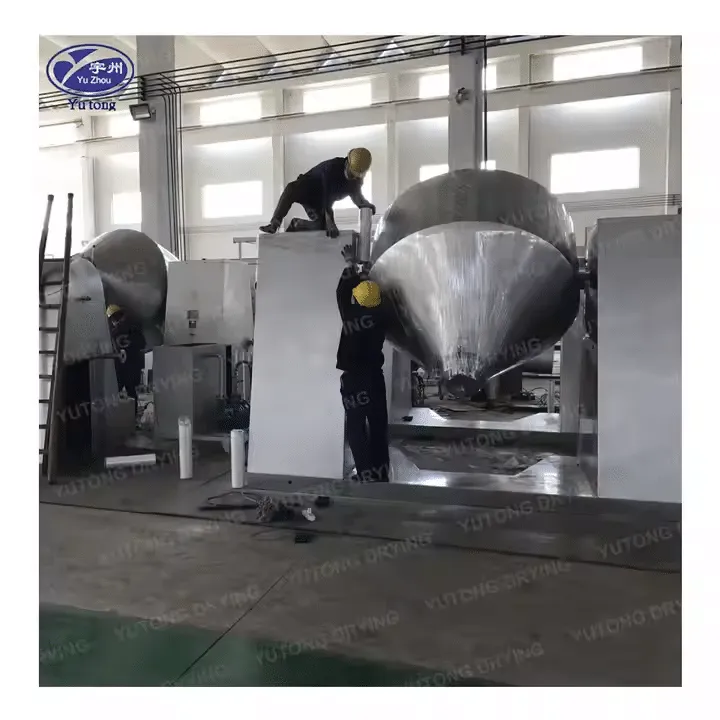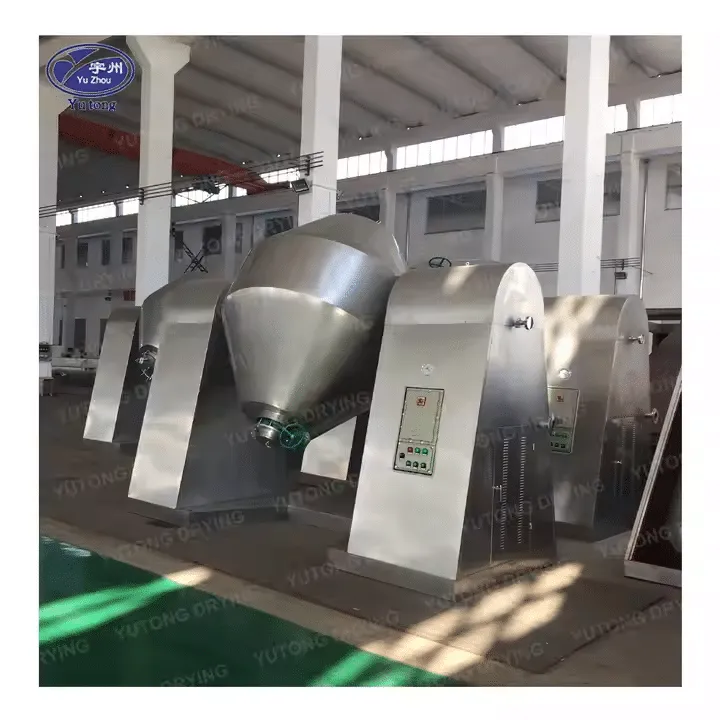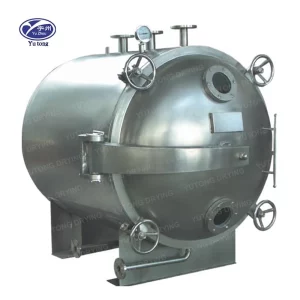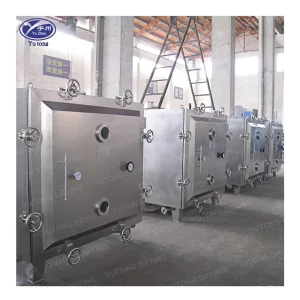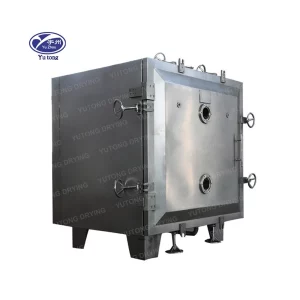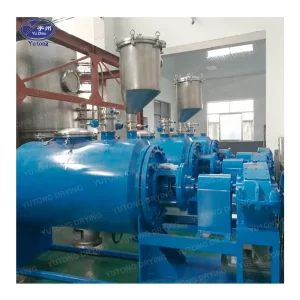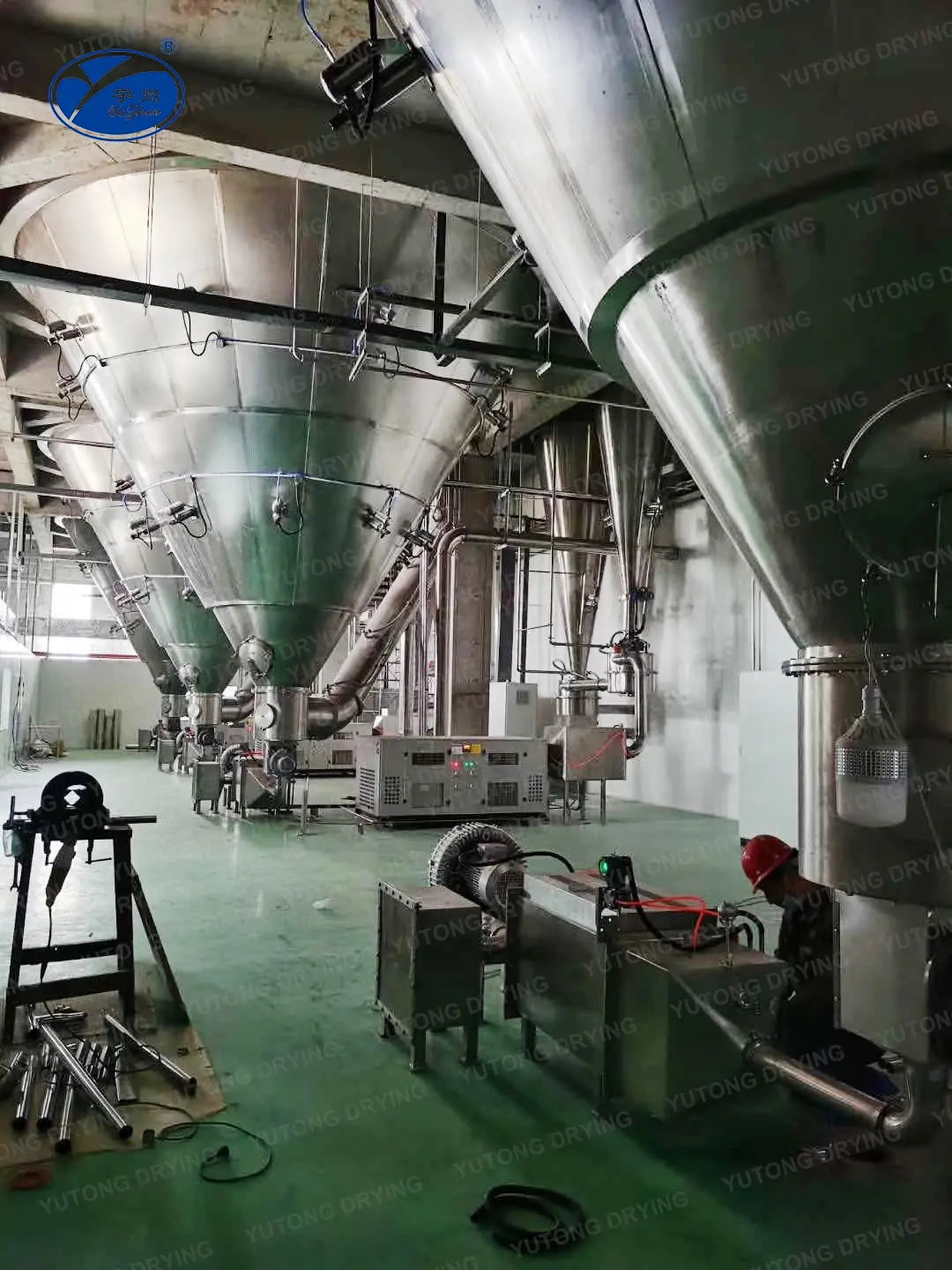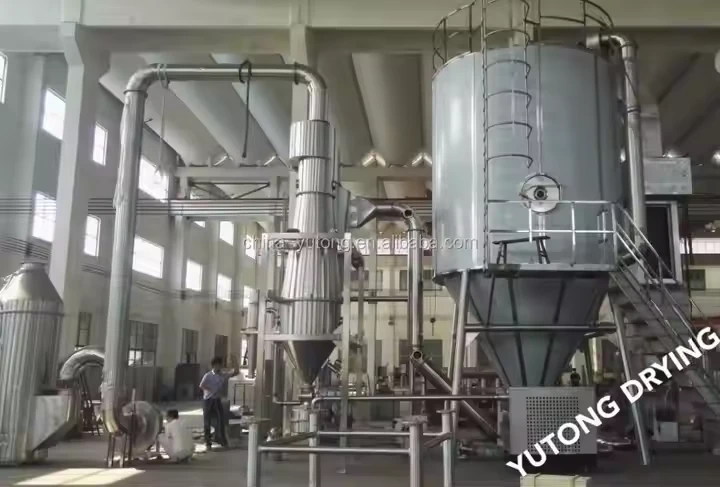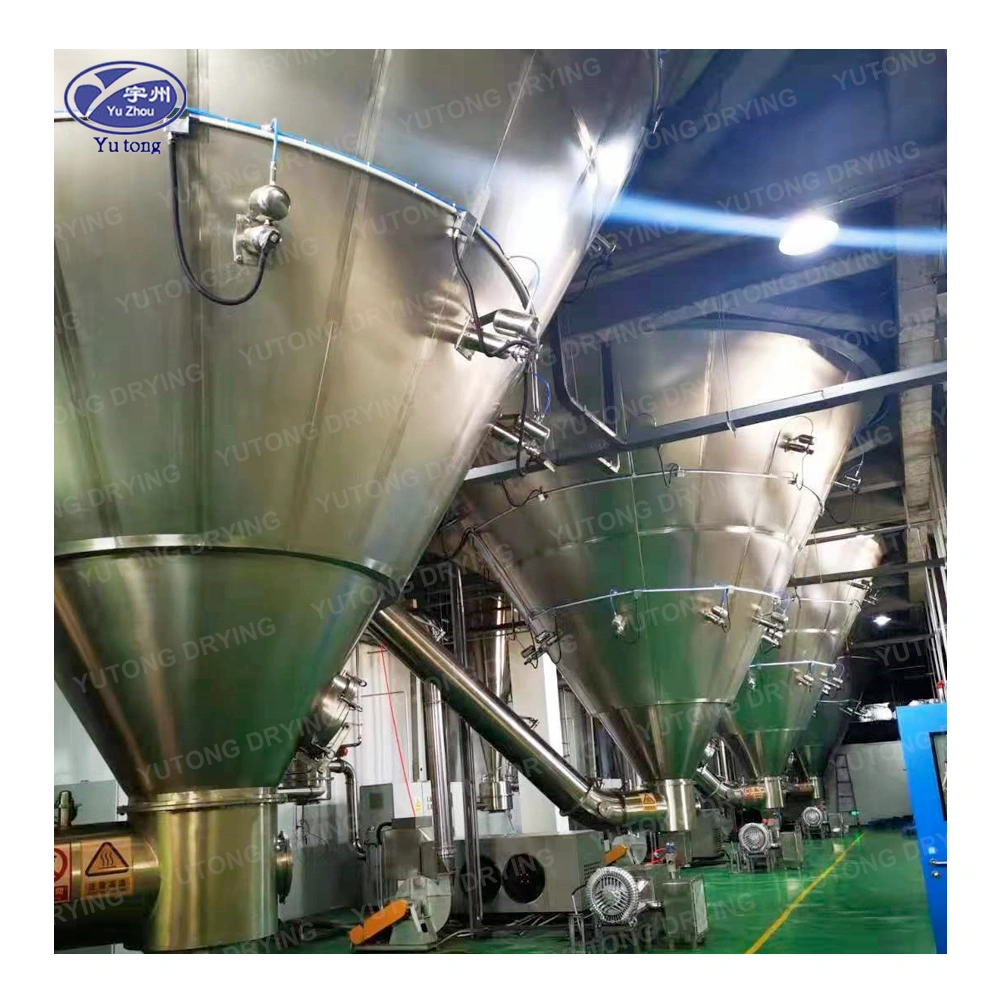
Table des matières
Détails du produit
Vacuum dryers are indispensable in a myriad of industries, particularly when it comes to drying heat-sensitive materials or components that necessitate gentle drying. This article will thoroughly guide you through the essential steps in vacuum dryer construction, focusing on design calculations, detailed diagrams, and potential disadvantages. Whether you’re a seasoned engineer or a curious novice, grasping the construction and operational principles of vacuum dryers is crucial for optimizing their functionality and efficiency.
Before delving into the construction steps, it’s vital to understand the fundamentals of what a vacuum dryer is and how it operates. Essentially, a vacuum dryer extracts moisture from materials by creating a vacuum environment, which significantly lowers the atmospheric pressure and, subsequently, the boiling point of water. This method is particularly advantageous for drying heat-sensitive materials without inflicting thermal damage, thereby preserving their integrity and quality.
La science derrière le séchage sous vide
The mechanism of vacuum drying is rooted in basic physical principles. By reducing the pressure in the drying chamber, the boiling point of liquids like water is decreased. This allows for moisture to evaporate at lower temperatures, which is crucial for materials sensitive to heat. This process not only accelerates drying but also minimizes the risk of degradation or alteration of the material properties.
Advantages Of Conventional Drying Methods
Vacuum drying offers several advantages compared to traditional drying methods. It ensures a uniform drying process, reduces energy consumption, and is particularly effective in preventing oxidation and contamination. These benefits make vacuum dryers a preferred choice in industries where product quality and efficiency are paramount.
Types de sécheurs sous vide
There are several types of vacuum dryers tailored to different industrial needs, including:
- Rotary Vacuum Dryers: These are cylindrical and rotate to ensure even drying, ideal for free-flowing materials.
- Vacuum Shelf Dryers: Featuring multiple shelves, these dryers allow for batch drying of various materials simultaneously.
- Industrial Vacuum Dryers: These are designed for large-scale drying processes, capable of handling substantial volumes in diverse industries.
- Laboratory Vacuum Dryers: Used for small-scale, precise drying requirements, often in research and development settings.
- Continuous Vacuum Dryers: Designed for uninterrupted drying processes, often used in high-volume production lines where continuous operation is required.
Key Steps in Vacuum Dryer Construction
Constructing a vacuum dryer involves several critical steps, from initial planning to final execution. Let’s explore these steps in detail, ensuring a comprehensive understanding of the process.
Step 1: Initial Design and Calculations
The first step in constructing a vacuum dryer is to conduct thorough design calculations. These calculations are pivotal in determining the size, capacity, and overall efficiency of the dryer. Key factors to consider include:
- Material Properties: Understanding the properties of the material to be dried is fundamental. This involves analyzing its thermal sensitivity, moisture content, and drying behavior to ensure the drying process is both effective and gentle.
- Capacity Requirements: Accurately determining the volume and weight of material that needs to be dried within a specified timeframe is crucial for designing a dryer that meets production needs without unnecessary excess capacity.
- Vacuum Requirements: Calculating the necessary vacuum level is essential to achieve efficient drying. This involves understanding the relationship between pressure, temperature, and drying rate to optimize the drying conditions for specific materials.
Step 2: Creating a Vacuum Dryer Diagram
Once the calculations are complete, the next step is to create a detailed vacuum dryer diagram. This diagram serves as a comprehensive blueprint for the construction process, detailing every component of the dryer, including:
- Vacuum Chamber: The primary area where the drying process occurs. The design must ensure uniform pressure distribution and accommodate the material volume.
- Heating System: This could be steam, hot water, or electric heating, depending on the design and material requirements. The heating system must provide consistent and controllable heat to facilitate effective drying.
- Vacuum Pump: Essential for creating and maintaining the vacuum inside the chamber. The pump must be compatible with the chamber size and capable of achieving the desired pressure levels efficiently.
- Control Systems: These are integral for monitoring and adjusting the drying parameters, ensuring precise control over the drying process for optimal results.
- Safety Features: Incorporating safety valves and pressure sensors is crucial to prevent overpressure situations and ensure safe operation.
Step 3: Material Selection
Choosing the right materials for constructing a vacuum dryer is critical to its durability and performance. The materials must withstand the vacuum pressure and temperature variations encountered during operation. Commonly used materials include:
- Stainless Steel: Renowned for its durability, resistance to corrosion, and ability to withstand high temperatures, making it a preferred choice for industrial-scale dryers.
- Aluminum: Lightweight and good for certain applications, particularly where weight is a critical factor. However, it may not offer the same durability as steel in harsh environments.
- Glass or Plastic: Often used for smaller, laboratory-scale dryers where transparency or specific chemical resistance is required. These materials are not typically suitable for high-pressure or high-temperature applications.
- Composite Materials: In some cases, advanced composites may be used to combine the benefits of different materials, offering enhanced performance for specific applications.
Step 4: Assembling the Components
With the design and materials ready, it’s time to assemble the components meticulously. This involves several critical steps, ensuring precision and quality in every aspect of construction:
- Constructing the Vacuum Chamber: Assemble the chamber according to the detailed diagram, ensuring all joints are airtight to maintain the vacuum integrity. This step requires precision engineering and quality assurance checks.
- Installing the Heating System: Depending on the design, install the appropriate heating system, ensuring it is integrated seamlessly with the chamber and control systems for efficient operation.
- Connecting the Vacuum Pump: Ensure the pump is correctly connected to achieve the desired vacuum level. Proper alignment and sealing are crucial to prevent leaks and maintain efficiency.
- Integrating Control Systems: Setting up the control systems to manage and monitor the drying process, including temperature, pressure, and timing adjustments for optimal results.
- Ensuring Safety Measures: Implementing necessary safety features, such as pressure relief valves and emergency shutoff systems, to protect both operators and equipment.
Step 5: Testing and Calibration
After assembly, the vacuum dryer must undergo rigorous testing and calibration. This step is crucial to ensure that the dryer operates efficiently and safely, meeting all performance criteria. It involves:
- Leak Testing: Ensuring all connections are airtight and capable of maintaining the desired vacuum level without leaks. This is vital for efficiency and safety.
- Performance Testing: Running the dryer with a test material to check drying efficiency, ensuring it meets the expected performance standards under real-world conditions.
- Calibration: Adjusting settings to optimize performance, including fine-tuning temperature, pressure, and drying time to achieve the desired drying characteristics.
- Safety Checks: Conducting thorough safety checks to ensure all systems are functioning correctly and that emergency protocols are in place.
Potential Disadvantages of Vacuum Dryers
While vacuum dryers offer numerous benefits, they also present some disadvantages that must be considered:
- High Initial Cost: The construction and setup of a vacuum dryer can be expensive, particularly for large industrial models. This includes the cost of materials, components, and specialized equipment required for construction.
- Complex Maintenance: Vacuum dryers require regular maintenance to ensure optimal performance, including checking seals, pumps, and control systems. This can be time-consuming and may require specialized knowledge or training.
- Limited Capacity: Depending on the design and size, vacuum dryers may have a limited capacity compared to other drying methods, which can impact production rates and scalability in some applications.
- Technical Expertise Required: Operating and maintaining vacuum dryers often requires a higher level of technical expertise compared to simpler drying methods, which can increase operational complexity.
Applications des sécheurs sous vide
Vacuum dryers are utilized across various industries, including pharmaceuticals, food processing, and chemical manufacturing. They are particularly ideal for:
- Drying Heat-Sensitive Materials, Such as pharmaceuticals and certain food products, where maintaining the integrity and quality of the material is crucial.
- Reducing Oxidation: By removing air from the drying environment, vacuum dryers help minimize oxidation, which can degrade sensitive materials.
- Preserving Quality: Ensuring the material retains its original properties after drying, making vacuum dryers an excellent choice for high-value products where quality is paramount.
- Improving Process Efficiency: Vacuum dryers often provide faster drying times and more consistent results compared to conventional drying methods, enhancing overall process efficiency.
by – Kenny (https://unsplash.com/@kennyzhang29)
Conclusion
Constructing a vacuum dryer involves a meticulous process of planning, design, and execution. By understanding the essential steps and considerations, you can create an efficient and reliable vacuum dryer tailored to your specific needs. Whether you’re involved in industrial applications or small-scale production, mastering the construction of vacuum dryers is a valuable skill that can significantly enhance operational efficiency and product quality.
Incorporating these steps into your construction process will ensure that your vacuum dryer is not only effective but also durable and efficient. From understanding the basic principles to executing detailed construction plans, this guide serves as a comprehensive resource for anyone involved in vacuum dryer construction, providing the knowledge and insights needed to succeed in this complex yet rewarding field.
Caractéristiques
|
Modèle
|
100
|
500
|
1000
|
1500
|
2000
|
5000
|
|
Volume (L)
|
100
|
500
|
1000
|
15000
|
2000
|
5000
|
|
Volume de chargement maximal (L)
|
40
|
200
|
400
|
600
|
800
|
2000
|
|
Capacité de charge maximale (kg)
|
20
|
100
|
200
|
300
|
400
|
1000
|
|
Vitesse de rotation (tr/min)
|
3~13
|
6
|
5
|
4
|
||
|
Puissance du moteur (kW)
|
0.75
|
1.5
|
3
|
4
|
5.5
|
15
|
|
Surface au sol (mm)
|
2160 × 800
|
2350 × 800
|
2860 × 1300
|
3060 × 1300
|
3260 × 1400
|
4400 × 2500
|
|
Hauteur de rotation (mm)
|
1750
|
2250
|
2800
|
2940
|
2990
|
4200
|
|
Pression de conception dans le conteneur (MPa)
|
-0,09 à 0,096
|
|||||
|
Pression de conception intercouche (MPa)
|
≤ 0,3
|
|||||
|
Poids (kg)
|
800
|
1200
|
2800
|
3300
|
3600
|
8600
|
Applications
Secteurs concernés : Ateliers de réparation de machines, usines de produits alimentaires et de boissons, fermes, commerce de détail, magasins d'alimentation, énergie et mines, magasins d'alimentation et de boissons


